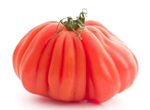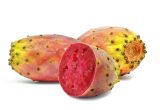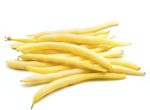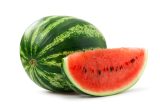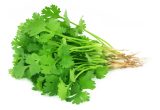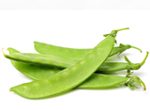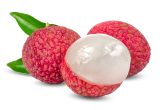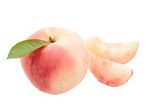Baby spinach

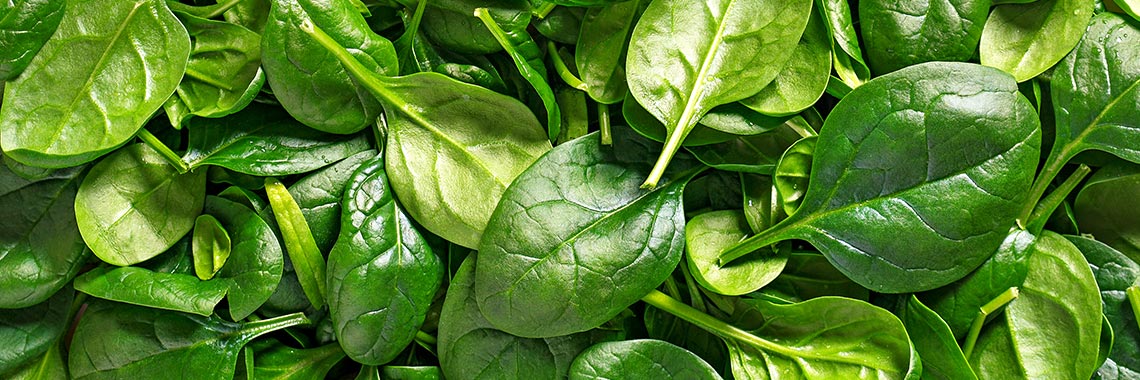
Description
- Spinach belongs to the Chenopiodaceae family, genus Soinacea, species oleacera.
- Appearing in France in the 12th century, spinach originated in Persia (Prohens-Tomás, 2008).
PHYSICAL AND ORGANOLEPTIC CHARACTERISTICS
- Spinach is an annual plant with smooth or blistered leaves (Sabaghnia, 2015). The chlorophylls a and b are responsible for its dark green colour (Pavia, 1999).
- Glucose, fructose and sucrose give it its sweet taste (Guy, 1992).
COMPOSITION CHARACTERISTICS (excluding macronutrients, vitamins and minerals)
- Spinach is considered a functional food due to its phytochemical and non-essential bioactive compounds, such as glycolipids and thylakoids (Roberts, 2016).
- These can modulate the expression and activity of genes involved in metabolism, proliferation, inflammation, and in antioxidant defence, and limit food intake by inducing the secretion of satiety hormones (Roberts, 2016).
- Spinach contains significant amounts of chlorophyll and carotenoids, in the form of lutein (Yatsushiro, 2019). They are known for their protective effects against certain cancerous pathologies (Pan, 2017).
- The beneficial effects of lutein are now well known in certain ocular pathologies such as age-related macular degeneration (Blackbird, 2015) and retinopathy (Kowluru, 2014), but also for their anti-inflammatory properties (Chung, 2017).
RAW
The following values are approximate and depend on variety, season, ripeness, cultivation conditions, etc.
Raw baby spinach is low in energy* as it provides an average of 18.30 calories (kcal) per 100 g, i.e. 76 kJ.
COMPOSITION TABLES
For each nutrient, the tables provide information on the content, minimum and maximum values, as well as the percentage of the Dietary Reference Values (DRVs) per 100 g net of baby spinach for salads.
* Regulation (EC) No 1924/2006 of the European Parliament and of the Council of 20 December 2006 on nutrition and health claims made on foods.
MACRONUTRIENTS
| Constituent (g) | Average content |
Min-Max per 100g |
DRV% |
|---|---|---|---|
| Water | 93,70 | 91,20 - NC | - |
| Fibers | 2,40 | - | - |
| Carbohydrates | < 0,85 | NC - 1,10 | - |
| Sugars | - | - | - |
| Lipids | 0,40 | - | 0,57 |
| Saturated fat | 0,09 | 0,01 - NC | 0,45 |
| Protein | 2,06 | NC - 2,90 | 4,12 |
| Constituent (g) | Amount | Min-Max | DRV% |
|---|---|---|---|
| Water | Ciqual 2020 (valeur issue des analyses Ciqual-Aprifel 2018) | - | - |
| Fibers | Ciqual 2020 (valeur issue des analyses Ciqual-Aprifel 2018) | - | - |
| Carbohydrates | Ciqual 2020 | - | Règlement (UE) N°1169/2011 du parlement Européen et du conseil du 25 octobre 2011 |
| Sugars | Ciqual 2020 (valeur issue des analyses Ciqual-Aprifel 2018) | - | Règlement (UE) N°1169/2011 du parlement Européen et du conseil du 25 octobre 2011 |
| Lipids | Ciqual 2020 (valeur issue des analyses Ciqual-Aprifel 2018) | - | Règlement (UE) N°1169/2011 du parlement Européen et du conseil du 25 octobre 2011 |
| Saturated fat | Ciqual 2020 (valeur issue des analyses Ciqual-Aprifel 2018) | - | Règlement (UE) N°1169/2011 du parlement Européen et du conseil du 25 octobre 2011 |
| Protein | Ciqual 2020 (valeur issue des analyses Ciqual-Aprifel 2018) | - | Règlement (UE) N°1169/2011 du parlement Européen et du conseil du 25 octobre 2011 |
Zoom on carbohydrates
- Baby spinach can be said to be “sugar-free*” as it contains less than 0.5 g of sugar per 100 g.
Zoom on fibres
- Baby spinach contains an average of 2.40 g of fibre per 100 g.
- This amount of fibre is significant. It is equivalent to the average quantity found in raw vegetables (2.43 g per 100 g).
Zoom on proteins
- The protein content of baby spinach (2.06 g per 100 g) is almost equivalent to the average amount found in raw vegetables (2 g per 100 g).
Zoom on lipids
- The content of fat in spinach shoots (0.40 g per 100 g) is lower than the average amount present in raw vegetables (0.56 g per 100 g).
- Baby spinach is fat-free* as it contains less than 0.5 g of fat per 100 g.
*Regulation (EC) No 1924/2006 of the European Parliament and of the Council of 20 December 2006 on nutrition and health claims made on foods.
MINERALS AND TRACE ELEMENTS
| Constituent | Average content |
Min-Max per 100g |
DRV% |
|---|---|---|---|
| Calcium (mg) | 110 | 86 - NC | 13,75 |
| Chloride (mg) | 70,1 | NC - 133 | 8,76 |
| Copper (mg) | 0,08 | NC - 0,10 | 8 |
| Iron (mg) | 1,80 | NC - 2,20 | 12,86 |
| Iodine (µg) | 60 | 30 - NC | 40 |
| Magnesium (mg) | 44 | NC - 120 | 11,73 |
| Manganese (mg) | 0,62 | 0,47 - NC | 31 |
| Phosphorus (mg) | 32 | NC - 52 | 4,57 |
| Potassium (mg) | 580 | NC - 750 | 29 |
| Selenium (µg) | < 20 | - | - |
| Sodium (mg) | 25 | NC - 80,20 | - |
| Zinc (mg) | 0,43 | NC - 0,82 | 4,30 |
| Constituent | Amount | Min-Max | DRV% |
|---|---|---|---|
| Calcium (mg) | Ciqual 2020 (valeur issue des analyses Ciqual-Aprifel 2018) | - | Règlement (UE) N°1169/2011 du parlement Européen et du conseil du 25 octobre 2011 |
| Chloride (mg) | Ciqual 2020 (valeur issue des analyses Ciqual-Aprifel 2018) | - | Règlement (UE) N°1169/2011 du parlement Européen et du conseil du 25 octobre 2011 |
| Copper (mg) | Ciqual 2020 (valeur issue des analyses Ciqual-Aprifel 2018) | - | Règlement (UE) N°1169/2011 du parlement Européen et du conseil du 25 octobre 2011 |
| Iron (mg) | Ciqual 2020 (valeur issue des analyses Ciqual-Aprifel 2018) | - | Règlement (UE) N°1169/2011 du parlement Européen et du conseil du 25 octobre 2011 |
| Iodine (µg) | Ciqual 2020 (valeur issue des analyses Ciqual-Aprifel 2018) | - | Règlement (UE) N°1169/2011 du parlement Européen et du conseil du 25 octobre 2011 |
| Magnesium (mg) | Ciqual 2020 (valeur issue des analyses Ciqual-Aprifel 2018) | - | Règlement (UE) N°1169/2011 du parlement Européen et du conseil du 25 octobre 2011 |
| Manganese (mg) | Ciqual 2020 (valeur issue des analyses Ciqual-Aprifel 2018) | - | Règlement (UE) N°1169/2011 du parlement Européen et du conseil du 25 octobre 2011 |
| Phosphorus (mg) | Ciqual 2020 (valeur issue des analyses Ciqual-Aprifel 2018) | - | Règlement (UE) N°1169/2011 du parlement Européen et du conseil du 25 octobre 2011 |
| Potassium (mg) | Ciqual 2020 (valeur issue des analyses Ciqual-Aprifel 2018) | - | Règlement (UE) N°1169/2011 du parlement Européen et du conseil du 25 octobre 2011 |
| Selenium (µg) | Ciqual 2020 (valeur issue des analyses Ciqual-Aprifel 2018) | - | Règlement (UE) N°1169/2011 du parlement Européen et du conseil du 25 octobre 2011 |
| Sodium (mg) | Ciqual 2020 (valeur issue des analyses Ciqual-Aprifel 2018) | - | - |
| Zinc (mg) | Ciqual 2020 (valeur issue des analyses Ciqual-Aprifel 2018) | - | Règlement (UE) N°1169/2011 du parlement Européen et du conseil du 25 octobre 2011 |
Zoom on minerals and trace elements
- Baby spinach is high in:
- iodine, as it provides the equivalent of 40% of DRVs, i.e. 60 µg per 100 g. Moreover, according to the Ciqual 2020 table data, baby spinach is by far the vegetable with the highest iodine content.
- manganese, as it provides the equivalent of 31% of DRVs, i.e. 0.62 mg per 100 g.
- It is also a source of potassium as it provides the equivalent of 29% of DRVs, i.e. 580 mg per 100 g. According to the Ciqual 2020 table, baby spinach is the vegetable with the highest potassium content.
- It also provides significant amounts of calcium, iron and magnesium. It brings the equivalent of:
- 13.75% of DRVs for calcium, i.e. 110 mg per 100 g. In fact, according to the Ciqual 2020 table, spinach is the vegetable that contains the most calcium;
- 12.86% of DRVs for iron, i.e. 1.80 mg per 100 g;
- 11.73% of DRVs for magnesium, i.e. 44 mg per 100 g.
- The other minerals and trace elements are present in quantities representing less than 9% of DRVs
VITAMINS
| Constituent | Average content |
Min-Max per 100g |
DRV% |
|---|---|---|---|
| Provitamin A Beta-carotene (µg) | 2 810 | 2710 - NC | - |
| Vitamin A equivalent (µg) | 468,33 | 451,67 - NC | 58,54 |
| Vitamin B1 (mg) | 0,041 | NC - 0,16 | 3,73 |
| Vitamin B2 (mg) | 0,057 | 0,052 - NC | 4,07 |
| Vitamin B3 (mg) | 0,26 | NC - 0,32 | 1,63 |
| Vitamin B5 (mg) | 0,20 | NC - 0,21 | 3,33 |
| Vitamin B6 (mg) | 0,15 | NC - 0,18 | 10,71 |
| Vitamin B9 (µg) | 78,6 | NC - 128 | 39,30 |
| Vitamin C (mg) | 6,04 | NC - 11,60 | 7,55 |
| Vitamin E (mg) | 0,56 | NC - 2,36 | 4,67 |
| Vitamin K1 (µg) | 75,50 | NC - 78 | 100,67 |
| Constituent | Amount | Min-Max | DRV% |
|---|---|---|---|
| Provitamin A Beta-carotene (µg) | Ciqual 2020 (valeur issue des analyses Ciqual-Aprifel 2018) | - | - |
| Vitamin A equivalent (µg) | Calcul à partir de la valeur Provitamine A Béta-carotène* | - | Règlement (UE) N°1169/2011 du parlement Européen et du conseil du 25 octobre 2011 |
| Vitamin B1 (mg) | Ciqual 2020 (valeur issue des analyses Ciqual-Aprifel 2018) | - | Règlement (UE) N°1169/2011 du parlement Européen et du conseil du 25 octobre 2011 |
| Vitamin B2 (mg) | Ciqual 2020 (valeur issue des analyses Ciqual-Aprifel 2018) | - | Règlement (UE) N°1169/2011 du parlement Européen et du conseil du 25 octobre 2011 |
| Vitamin B3 (mg) | Ciqual 2020 (valeur issue des analyses Ciqual-Aprifel 2018) | - | Règlement (UE) N°1169/2011 du parlement Européen et du conseil du 25 octobre 2011 |
| Vitamin B5 (mg) | Ciqual 2020 (valeur issue des analyses Ciqual-Aprifel 2018) | - | Règlement (UE) N°1169/2011 du parlement Européen et du conseil du 25 octobre 2011 |
| Vitamin B6 (mg) | Ciqual 2020 (valeur issue des analyses Ciqual-Aprifel 2018) | - | Règlement (UE) N°1169/2011 du parlement Européen et du conseil du 25 octobre 2011 |
| Vitamin B9 (µg) | Ciqual 2020 (valeur issue des analyses Ciqual-Aprifel 2018) | - | Règlement (UE) N°1169/2011 du parlement Européen et du conseil du 25 octobre 2011 |
| Vitamin C (mg) | Ciqual 2020 (valeur issue des analyses Ciqual-Aprifel 2018) | - | Règlement (UE) N°1169/2011 du parlement Européen et du conseil du 25 octobre 2011 |
| Vitamin E (mg) | Ciqual 2020 (valeur issue des analyses Ciqual-Aprifel 2018) | - | Règlement (UE) N°1169/2011 du parlement Européen et du conseil du 25 octobre 2011 |
| Vitamin K1 (µg) | Ciqual 2020 (valeur issue des analyses Ciqual-Aprifel 2018) | - | Règlement (UE) N°1169/2011 du parlement Européen et du conseil du 25 octobre 2011 |
Zoom on vitamins
- Baby spinach is high in:
- vitamin K1, as it provides the equivalent of 100.67% of DRVs, i.e. 75.50 µg per 100 g;
- vitamin A, as it provides the equivalent of 58.54% of DRVs i.e. 468.33 µg per 100 g;
- vitamin B9, as it provides the equivalent of 39.30% of DRVs, i.e. 78.60 µg per 100 g.
- It also provides a significant amount of vitamin B6, representing the equivalent of 10.71% of DRVs, i.e. 0.15 mg per 100 g.
- The other vitamins represent less than 8% of DRVs.
*Calculation made: Beta Carotene / 6 + retinol
POLYPHENOLS
Nutrition and health claims
According to the definitions of nutrition claims as set out in Regulation (EC) No 1924/2006 on nutrition and health claims, and in view of the composition of raw baby spinach, the following claims may be used:
NUTRITION CLAIMS OF BABY SPINACH
- Low in energy (100 g of baby spinach provide less than 40 kcal)
- Sugar-free (100 g of baby spinach contain less than 0.5 g of sugars)
- Fat-free (100 g of baby spinach contain less than 0.5 g of fat)
- High in vitamin K1 (100 g of baby spinach provide the equivalent of more than 30% of DRVs)
- High in vitamin A (100 g of baby spinach provide the equivalent of more than 30% of DRVs)
- High in iodine (100 g of baby spinach provide the equivalent of more than 30% of DRVs)
- High in vitamin B9 (100 g of baby spinach provide the equivalent of more than 30% of DRVs)
- High in manganese (100 g of baby spinach provide the equivalent of more than 30% of DRVs)
- Source of potassium (100 g of baby spinach provide the equivalent of more than 15% of DRVs)
HEALTH CLAIMS (for a consumption of 100 g of baby spinach)
Vitamin K1
- Vitamin K1 contributes to:
- maintenance of normal bones,
- normal blood clotting.
Vitamin A
- Vitamin A has a role in the process of cell specialisation.
- Vitamin A contributes to:
- maintenance of normal skin,
- maintenance of normal mucous membranes,
- maintenance of normal vision,
- normal iron metabolism,
- normal function of the immune system.
Iodine
- Iodine contributes to:
- normal cognitive function,
- normal energy-yielding metabolism,
- normal functioning of the nervous system,
- maintenance of normal skin,
- normal production of thyroid hormones and normal thyroid function.
Folates or vitamin B9
- Folates contribute to:
- maternal tissue growth during pregnancy,
- normal amino acid synthesis,
- normal blood formation,
- normal homocysteine metabolism,
- normal psychological function,
- normal function of the immune system,
- reduction of tiredness and fatigue.
- Folates have a role in the process of cell division.
Manganese
- Manganese contributes to:
- normal energy-yielding metabolism,
- maintenance of normal bones,
- normal formation of connective tissues,
- protection of cells from oxidative stress.
Potassium
- Potassium contributes to:
- normal functioning of the nervous system,
- normal muscle function,
- maintenance of normal blood pressure.
References
- Agence nationale de sécurité sanitaire de l’alimentation, de l’environnement et du travail. Table de composition nutritionnelle des aliments Ciqual 2020. Consultée le 21/08/2020 depuis le site internet Ciqual https://ciqual.anses.fr/
- Chung RWS, Leanderson P, Lundberg AK, Jonasson L. Lutein Exerts Anti-Inflammatory Effects in Patients with Coronary Artery Disease. Atherosclerosis. 2017;262:87‑93.
- Guy CL, Huber JLA, Huber SC. Sucrose Phosphate Synthase and Sucrose Accumulation at Low Temperature 1. Plant Physiology. 1992:100(1):502‑8.
- Kowluru RA, Zhong Q, Santos JM, Thandampallayam M, Putt D, Gierhart DL. Beneficial effects of the nutritional supplements on the development of diabetic retinopathy. Nutrition & Metabolism. 2014;11:8.
- Merle BMJ, Silver RE, Rosner B, Seddon JM. Adherence to a Mediterranean Diet, Genetic Susceptibility, and Progression to Advanced Macular Degeneration: A Prospective Cohort Study. The American Journal of Clinical Nutrition. 2015;102(5):1196‑1206.
- Pan L, Li Y, Zhu L, Zhang B, Shen Y, Xie A. A Novel Composite Hydrogel Initiated by Spinacia Oleracea L. Extract on Hela Cells for Localized Photodynamic Therapy. Materials Science & Engineering. C, Materials for Biological Applications. 2017;75: 1448‑55.
- Pavia DL, Lampman GM, Kriz GS, Engel RG (1999). Isolation of Chlorophyll and Carotenoid Pigments from Spinach. In Introduction to Organic Laboratory Techniques: A Microscale Approach, Brooks et Cole. p. 915.
- Prohens-Tomás J, Nuez F (2008). Vegetables I: Asteraceae, Brassicaceae, Chenopodicaceae, and Cucurbitaceae. Handbook of Plant Breeding, Vegetables. New York: Springer-Verlag. p189-218.
- Règlement (CE) N° 1924/2006 du Parlement européen et du Conseil du 20 décembre 2006 concernant les allégations nutritionnelles et de santé portant sur les denrées alimentaires.
- Règlement (UE) N°432/2012 de la Commission du 16 mai 2012 établissant une liste des allégations de santé autorisées portant sur les denrées alimentaires, autres que celles faisant référence à la réduction du risque de maladie ainsi qu’au développement et à la santé infantiles.
- Règlement (UE) n°1169/2011 du Parlement européen et du Conseil du 25 octobre 2011 concernant l’information des consommateurs sur les denrées alimentaires, modifiant les règlements (CE) n°1924/2006 et (CE) n°1925/2006 du Parlement européen et de Conseil et abrogeant la directive 87/250/CEE de la Commission, la directive 90/496/CEE du Conseil, la directive 1999/10/CE de la Commission, la directive 200/13/CE du Parlement européen et du Conseil, les directives 2002/67/CE et 2008/5/CE de la Commission et le règlement (CE) n°608/2004 de la Commission.
- Roberts JL, Moreau R. Functional Properties of Spinach (Spinacia Oleracea L.) Phytochemicals and Bioactives. Food & Function. 2016;7(8):3337‑53.
- Sabaghnia N, Asadi-Gharneh HA, Janmohammadi M. Genetic Diversity of Spinach (Spinacia Oleracea L.) Landraces Collected in Iran Using Some Morphological Traits. Acta Agriculturae Slovenica. 2015;103(1):101‑11.
- Yatsushiro T, Miura M, Nogami M, Sato M, Sakai M. A Rapid LC-MS/MS Method for Lutein Quantification in Spinach (Spinacia Oleracea). Microchemical Journal. 2019;1:104470





